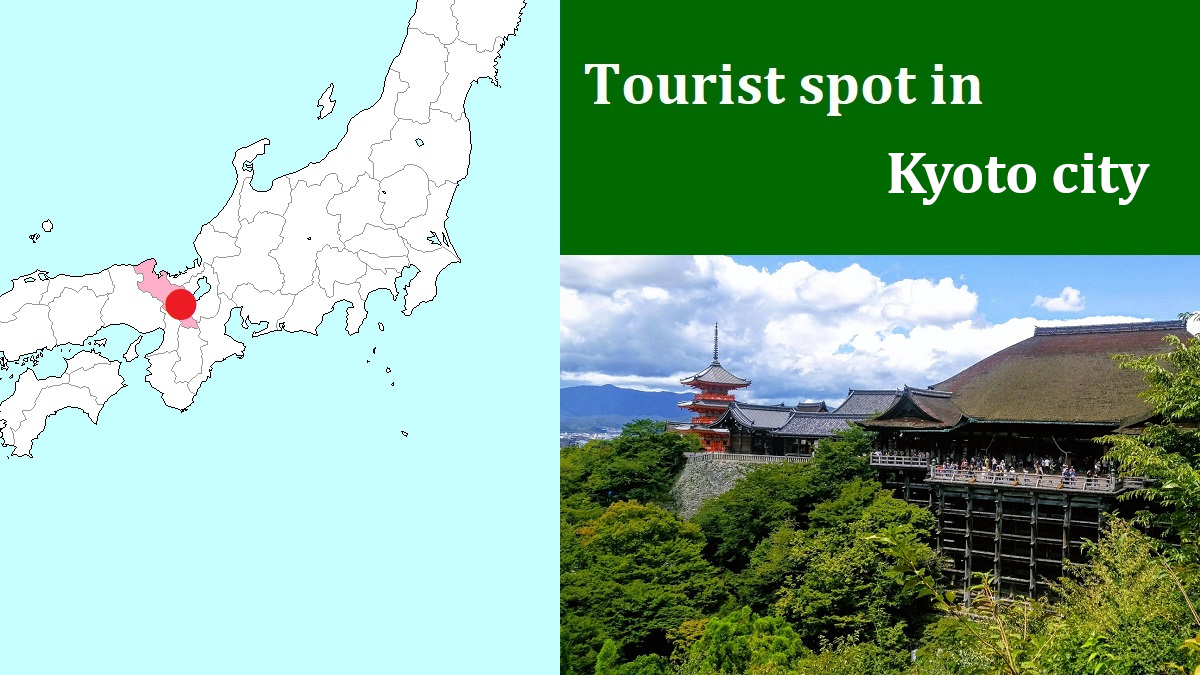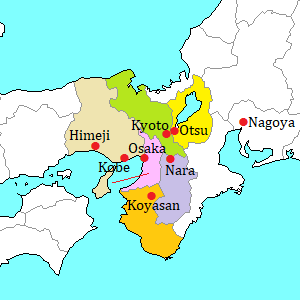Kinkakuji temple [金閣寺]
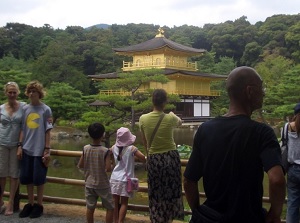
Kinkakuji
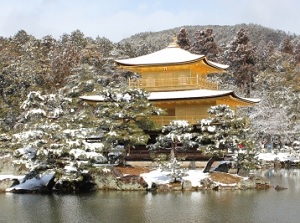
Kinkakuji in winter
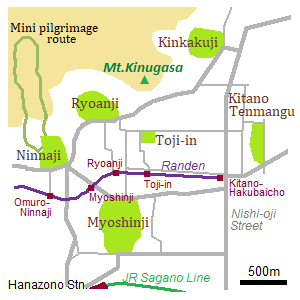
Kinkakuji is a Buddhist temple located in the northwest part of central Kyoto.
Kitano Tenmangu shrine is located about 1.5 km south-southeast of this temple, and Daitokuji temple is located about 1.5 km east.
This temple is one of 17 constructions of "Historic Monuments of Ancient Kyoto" designated as a World Heritage Site.
Kinkakiji is one of the most popular sightseeing spots in Kyoto.
Originally, Saionji temple was built in this site in 1224.
But it had fallen into ruin.
In 1397, retired Ashikaga Yoshimitsu (1358-1408) who was the 3rd Shogun of Muromachi Govenment got this site.
And he built the gorgeous villa.
After his death, this villa was changed a Zen temple.
And the temple was named Rokuonji (鹿苑寺).
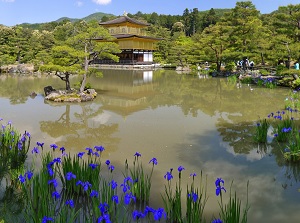
Kinkakuji in early summer
Photo by Kyoto Free Photo
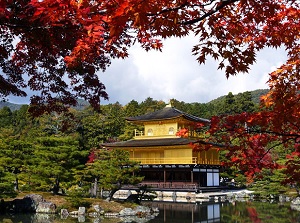
Kinkakuji in autumn
Photo by Kyoto Free Photo
The original buildings were destroyed by civil war in 1466, and most of them were rebuilt each time.
But only the main building covered with golden leaves had remained.
In 1950, a young priest who was dissatisfied with his life and the temple placed fire on the golden temple.
The valuable temple had burned down, and some important statues and art works in the temple had been reduced to ashes.
The temple had been repaired on a major scale in the late 19th century, and the detail drawings of the temple had made at the time, fortunately.
In 1955, the temple was restored in faithful accordance with the drawings.
The golden building is generally called Kinkaku (金閣), but the formal name is Shariden (舎利殿).
"Kinkaku" means "Golden Pavilion".
So, "Kinkakuji" has become popular as the name of this temple.
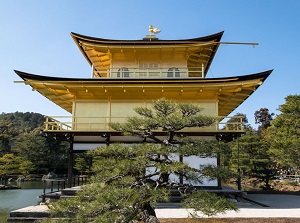
Side of Kinkaku (Shariden)
Photo by inariage.com
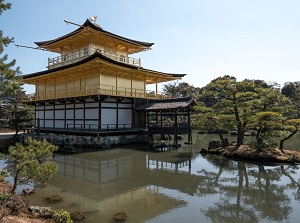
Kinkaku & an island of Kyokochi
Photo by inariage.com
The site of the temple is about 350 meters from east to west and about 300 meters from north to south.
Some main buildings are in the center of the precinct.
And the west part of the precinct is a garden.
Kyôkochi pond (鏡湖池) and Anmintaku pond (安民沢) are set up in the garden.
Kinkaku stands by Kyôkochi.
Kinkaku is the three-story building, and golden leaves are put on the outside of the second and third floors.
The last repair of the golden leaves was in 1987.
200,000 golden leaves of 10.8 cm square were used for the repair. (The total weight of the gold was about 20 kilograms.)
We can't enter into Kinkaku.
We see Kinkaku strolling around Kyôkochi pond.
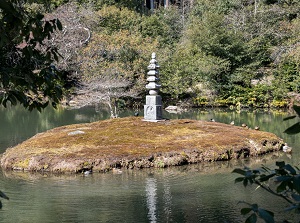
Hakuja-no-tsuka in Anmintaku
Photo by inariage.com
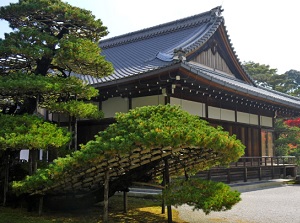
Pine trees, Rikushu-no-Matsu
Photo by Kyoto Free Photo
Anmintaku to the north of Kyôkochi is a pond surrounded with forest.
The pond was built in the period of Saionji.
Water is gushing in the pond and the water flows into Kyôkochi.
On an island in the pond, an old stone monument Hakuja-no-tsuka (白蛇の塚) stands.
There are the other spots such as old buildings, tea house, spring, unique pine tree, etc. in the precinct.
It takes about an hour to walk around the temple.
How to get here
Get off at Kita-oji (●K04 Karasuma Line of subway).
Then, by route bus, about 10 minutes to Kinkakuji-michi stop.
Or, from Kyoto station, by route bus, about 34 minutes to Kinkakuji-michi stop.

